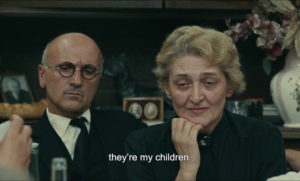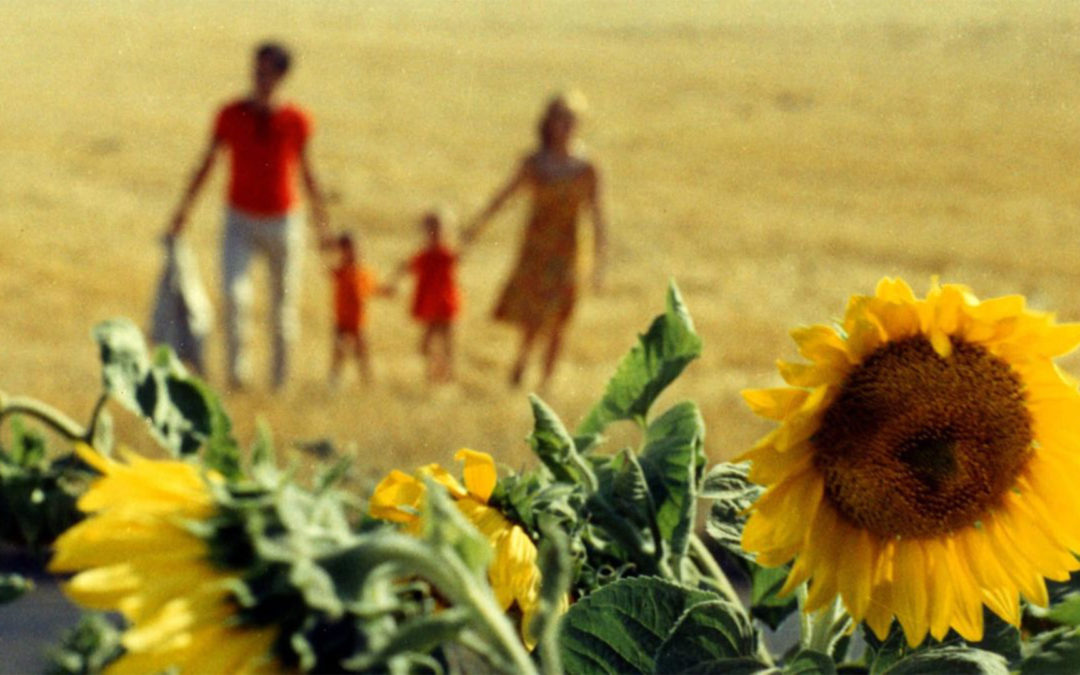Fortunately I have never had anybody cheat on me in a relationship, and I have never cheated, but my personal mentality about cheating goes like this: just don’t do it. On the contrary, Agnes Varda’s 1965 film, Le Bonheur or Happiness, centers around François (Jean-Claude Drouot), a man who sees cheating as additional happiness on top of his existing contentment with his wife. In my opinion, François is a fool for thinking he could have the so-called “best of both worlds” without any consequences, but that’s precisely what the movie explores; the image of perfection always has a dark underbelly.
As the only French New Wave female director, I want to pay tribute to the mountains that Varda has moved during her career. She started as a photographer before becoming a filmmaker, which explains her eye for her films’ beautiful locations and shots. As such a confident director, it’s interesting that she never went to film school or invested copious amounts of time studying movies; she had probably seen about twenty films in her life before coming out with her first feature film, La Pointe Courte (1955). The film received a massive amount of support and recognition and is even considered the first true French New Wave film because it sparked many of the techniques that now define the movement, such as low budgets and on-location shooting. Other directors such as François Truffaut or Jean Luc-Godard would utilize these techniques in their films in the late 1950s as well. Thus, she rightfully earned her title as the “grandmother” of the French New Wave. Out of all her ground-breaking films – including this one – Cléo from 5 to 7 (1962) is one you don’t want to miss out on, which I discussed in Issue #3. I suggest you take the time to watch the film and fully appreciate it in all of its glory.
This film is shot in color, and let me tell you, the mise-en-scène is straight out of a fairytale. Many of the movie’s locations were shot in the countryside or beautiful natural places like the woods or parks. I know I mention how beautiful France is in just about every issue, but I’ve been to France twice and can confirm that this film portrays its beauty the most accurately. There is so much more to France than the Eiffel Tower and Paris. There are lovely beaches with long boardwalks, charming apartments with marvelous double doors that let in the fresh air—and since there aren’t swarms of mosquitoes hanging around, it’s easy to have screenless windows. Even the ordinary, mundane things like the hotels are so enchanting. Not to mention all of the fantastic historical sites that are typically only a 30-minute drive away from each other. Compared to the Midwest in America, France’s country seems like the Ritz, and I miss it every day. The photo below also resembles a painting called Luncheon of the Boating Party, a painting done by the renowned painter Pierre-Auguste Renoir, whose son Jean Renoir, was a renowned filmmaker; clearly, greatness runs in the family. While many French New Wave directors found inspiration from the Renoir family—and Jean undeniably found inspiration from his father—the movement sought to make its own path and freedom from traditional techniques and ideas, the past was history. Renoir’s painting was beautiful, but Varda changed that inspiration into a reality and added a twist to the common thought of what’s behind the perfect luncheon.

Luncheon of the Boating Party (Pierre-Auguste Renoir, 1880-1881)

The whole family sitting together at a beautiful family table outside.
Varda’s films tend to include a feminist perspective, and that perspective can be especially seen in Le Bonheur. The plot follows François, his wife Thérèse (Claire Drouot), and his two children, Pierrot (Olivier Drouot) and Gisou (Sandrine Drouot), which by the way, are Jean Claude’s real wife and children. They go about their quaint everyday lives until François openly and shamelessly cheats. Of course, he doesn’t mention he has been seeing another woman to Thérèse—as most cheaters usually like to keep their secret well hidden. François seems to live in a daydream and gets to have everything in life he wants, while Thérèse is clueless but continues to be the perfect housewife. The film also emphasizes the standard for women to be perfect, especially physically. This idea is re-enforced throughout the mise-en-scène with collages of beautiful models hung up around places where François regularly sees them, like at his workplace and his mistress Émilie’s (Marie-France Boyer) house. When François finally does tell Thérèse about his cheating, he tries to convince her to be just as happy as he is, and that she should rejoice with him even though he is seeing Émilie. Still, he doesn’t understand that not everybody is going to see his reasoning or actions as correct. After a nap, he wakes up to find Thérèse has drowned herself in the lake.
The editing in this film is just as effective as its mise-en-scène. Every so often there will be scenes that flash and repeat, as if they were a broken record. When François finds Thérèse and holds her dead body, the action of him picking her up is repeated over about six times. In the title sequence there are also flashes of individual sunflowers between the long shot of the family walking towards the camera. I think it highlights the idea that when a memory is so vivid to us, we can replay it in our heads over and over whether the memory is good or bad, like the good times where he remembers seeing the sunflowers, or the bad, like seeing Thérèse’s lifeless body.

François (Jean-Claude Drouot) holding Thérèse’s (Claire Drouot) lifeless body.
As spectators, we get to experience both sides of François cheating, while usually, we’d only see one side of things as an individual. Varda uses voyeurism, so it’s like we are held to a level of secrecy as well. While watching him cuddle and talk of his happiness with Thérèse, we feel a certain degree of guilt for not being able to tell her ourselves of his cheating. The film juxtaposes that guilt with the bright mise-en-scene and Francois’s casualness, as if none of his actions are morally wrong. One example of how Francois never sees another perspective than his own is after Thérèse’s funeral while her parents and François’s family eat lunch together, discussing what should happen to the children. Thérèse’s parents suggest taking them since they are empty nesters. Yet, François dares to say, “I’ll be able to see them every Sunday. Even every weeknight if I want. You understand, they are my children” directly to the parents who just lost their child and will no longer be able to see her at all anymore.

Thérèse’s parents as François talks to them about who the children will end up with.
Varda subtly exposes the cycle of repetition and replacement through the use of nature in the film as well. The film starts in the summer, where we see Francois and his family all holding hands, but by the end of the film, we see him and Émilie—the new mother figure—holding hands with the children, now in the fall. Just as the seasons cycle through each year, the replacement of his lover, wife, and mother to his children have cycled through too. Varda herself has said, “In a world full of prefabricated images of happiness, it’s interesting to take apart the clichés.” In the end, Francois has a perfect life again. Random people on the street would never be able to guess that Émilie isn’t the birth mother or first wife, that their family image wasn’t always like that, but we as viewers know exactly what it took to get to there.

François and Émilie (Marie-France Boyer) walking with the children.
For 1965, this film was bold and took a step out into unknown territory with its topics. As the “grandmother” of the French New Wave, Varda has successfully examined the side of a story often left untold and did so in an eloquent manner. She respectfully placed feminism into the mise-en-scène and parts of the storyline without shoving it down our throats, enough to realize the detrimental choices that can occur in relationships and usually affect the women more than the men. In terms of the larger scope as part of the French New Wave movement, Varda has proven that she can play with the top dogs and do something other French New Wave directors can’t – including her own unique, feminine touch.


Recent Comments